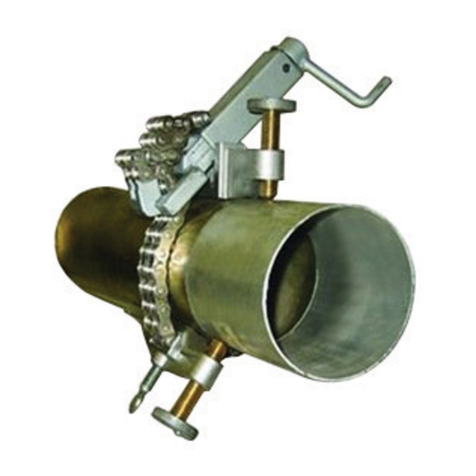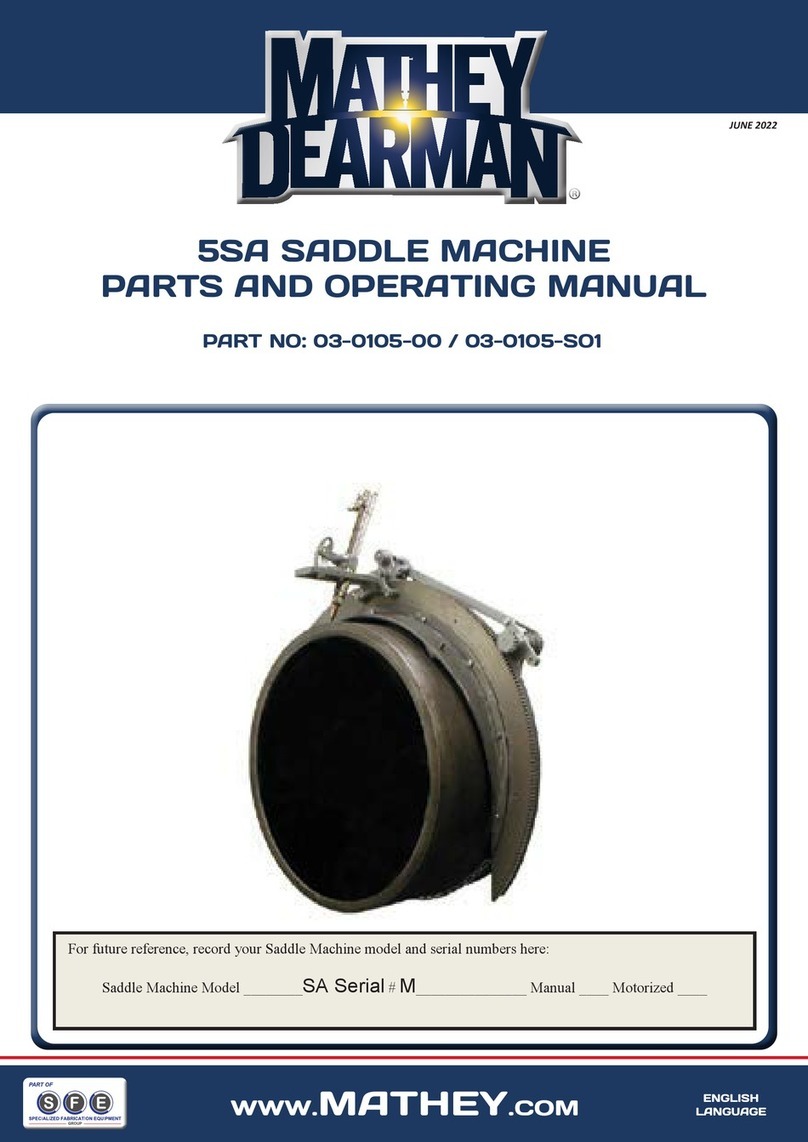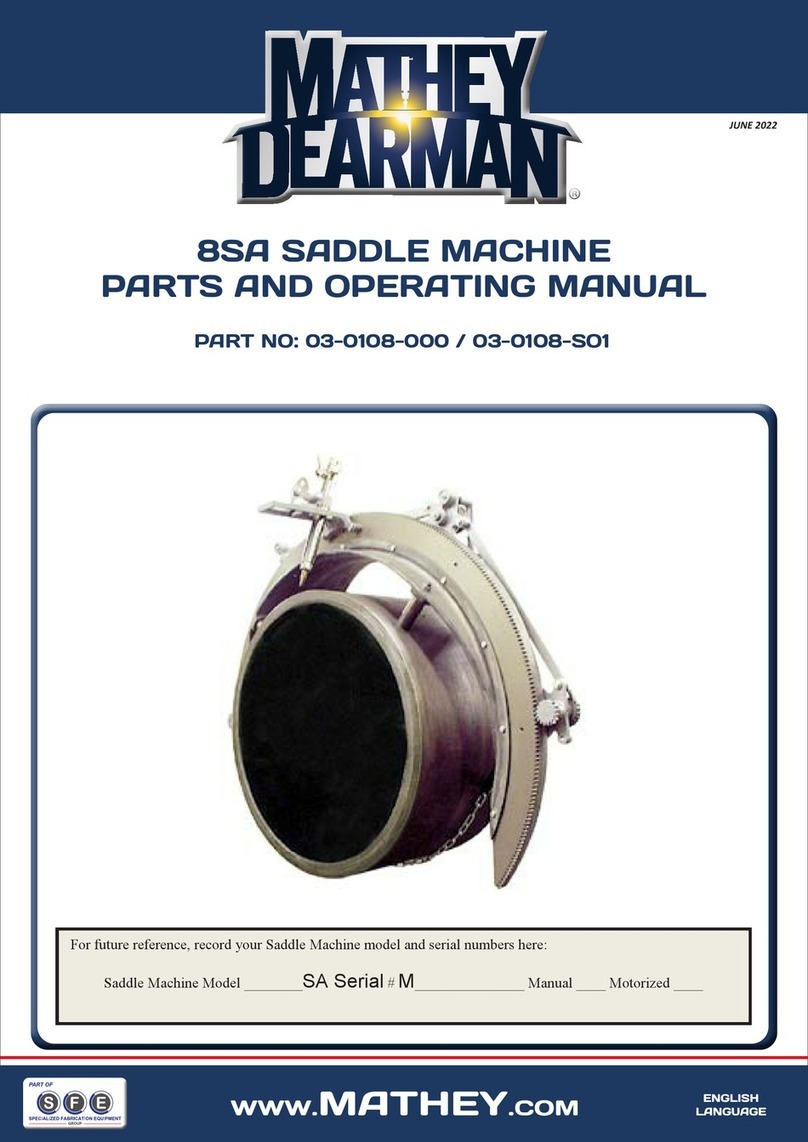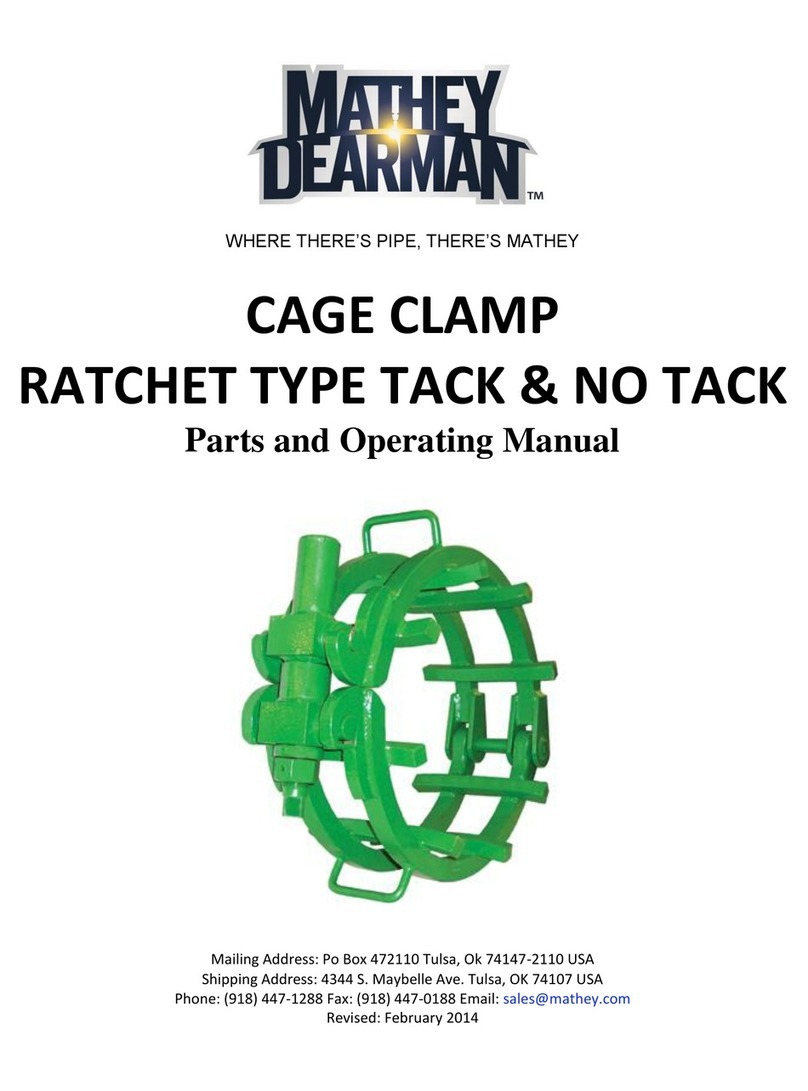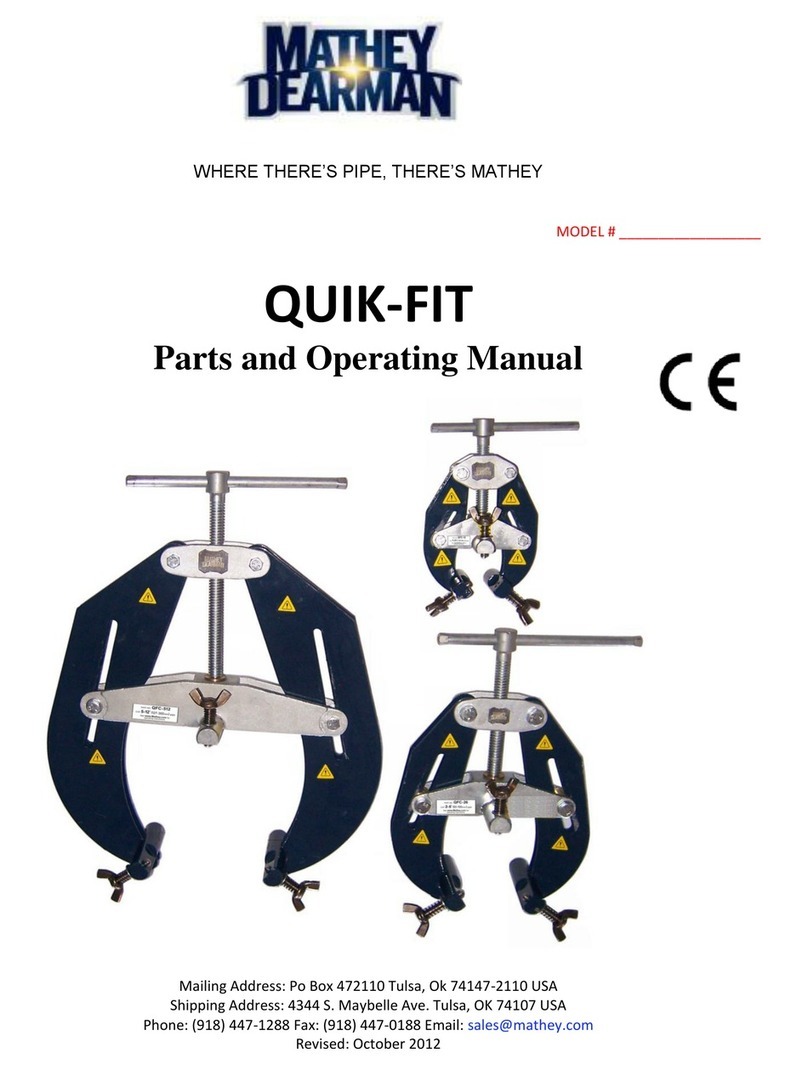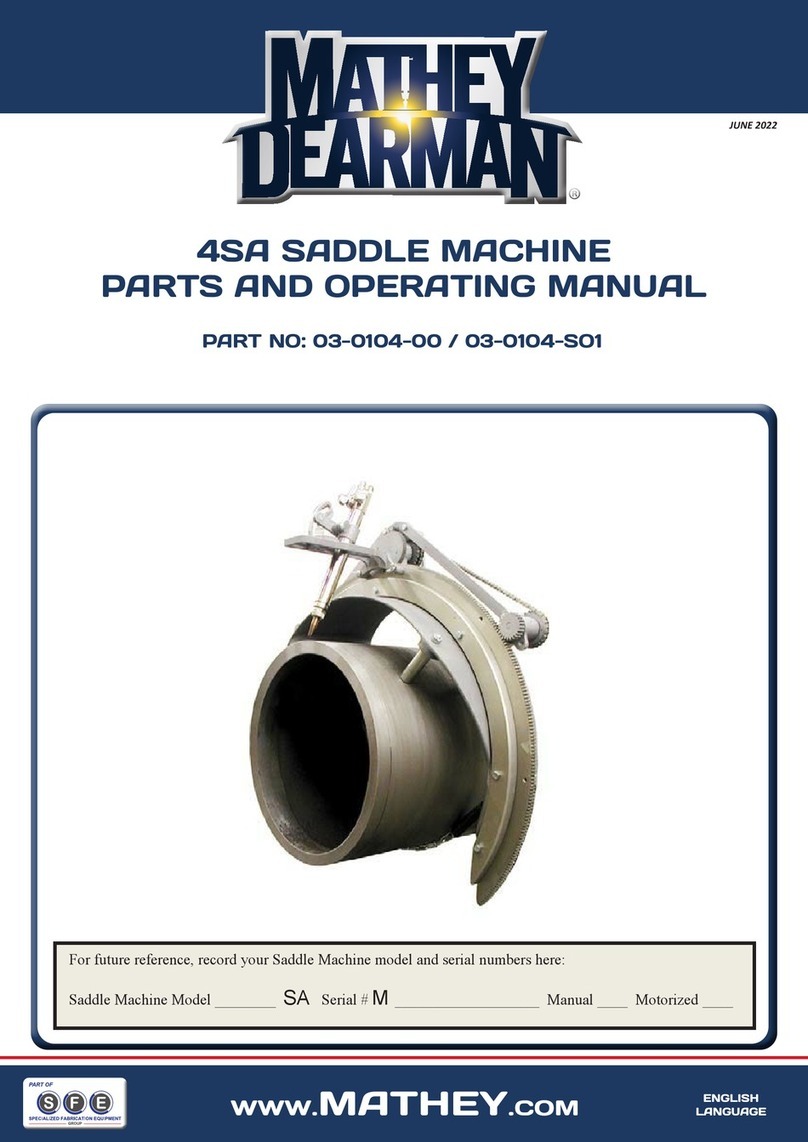
2
Subject Page#
Safety ……………………………………………………………………………………………………………………………………….. 3
General Information …………………………………………………………………………………………………………. 7
Installation of Spacer Bolts …………………………………………………………………………………………………………. 7
cture 1 Spacer Bolt Box ………………………………………………………………………………………………………………………… 7
Spacer Bolt Installation ………………………………………………………………………………………………………… 7
Spacer Bolt Configurations ………………………………………………………………………………………………………… 8
Spacer Bolt Part Identification …………………………………………………………………………………………. 8
Step Spacer Configuration ………………………………………………………………………………………………………… 8
Step Spacer Part Identification …………………………………………………………………………………………. 8
Step Spacer Installation ………………………………………………………………………………………………………… 9
Installation of Step Spacers ………………………………………………………………………………………………………… 9
Installation of 2SA Saddle Machine on Pipe …………………………………………………………………………. 9
e 4 Closing Boomer Latch ………………………………………………………………………………………………………… 10
3 Boomer Assembly Parts Configuration …………………………………………………………………………………………. 10
3 Boomer Assembly Parts Identification …………………………………………………………………………………………. 10
4Torch Arm & Torch Carrier Configuration ………………………………………………………………………….. 11
4 Torch Arm & Torch Carrier Parts Identification ………………………………………………………………………….. 11
Installation of Torch Arm, Torch Carrier Assembly and Torch …………………………………………… 11
Installation of Torch Arm ………………………………………………………………………………………………………… 11
Installation of Wing Nut ………………………………………………………………………………………………………… 12
The Manual Cutting Process …………………………………………………………………………………………………………. 12
The Motorized Cutting Process …………………………………………………………………………………………. 13
Face of the Motor Control Box …………………………………………………………………………………………. 13
End of the Motor Control Box …………………………………………………………………………………………. 13
Cable, Motor Control Box to Stepper Motor ………………………………………………………………………….. 14
5 2SA Saddle Machine Parts Configuration ………………………………………………………………………….. 16
5 2SA Saddle Machine Parts Identification ………………………………………………………………………….. 16
6 Single Bearing Bracket Configuration ………………………………………………………………………….. 17
6 Single Bearing Bracket Parts Identification ………………………………………………………………………….. 17
7 Double Bearing Bracket Parts Configuration ………………………………………………………………………….. 17
able 7 Double Bearing Bracket Parts Identification ………………………………………………………………………….. 17
Motorized 2SA Saddle Machine Parts Configuration ………………………………………………………….. 18
Motorized 2SA Saddle Machine Parts Identification ………………………………………………………….. 19
9 Trouble Shooting ……………………………………………………………………………………………………………………….. 20
.0 Maintenance ………………………………………………………………………………………………………………………… 21
.1 Timing the Ring Gear to the Pinion Gear ………………………………………………………………………….. 21
.2 Installation of a new Drive Chain …………………………………………………………………………………………. 22
Retiming of the Machine with Stepper Motor …………………………………………………………………………. 23
Replace of the Drive Chain of the Machine with Stepper Motor ………………………………………….. 23
Installation of the Stepper Motor Kit …………………………………………………………………………………………. 24
Disassembly and Repair of the Single and Double Bearing Bracket …………………………………………… 24
Storage ………………………………………………………………………………………………………………………… 24
.0 Limitations ………………………………………………………………………………………………………………………… 24
1 .0 Machine Safety ………………………………………………………………………………………………………………………… 25
2.0 Condition of use ………………………………………………………………………………………………………………………… 25
Condition of use ………………………………………………………………………………………………………………………… 25
2.2 Use of the Saddle Machine not Allow by The Manufacturer …………………………………………… 25
3.0 Disposal of the Saddle Machine …………………………………………………………………………………………. 25
4.0 Warranty ………………………………………………………………………………………………………………………… 26
Commercial Pipe Sizes …………………………………………………………………………………………………………. 26
